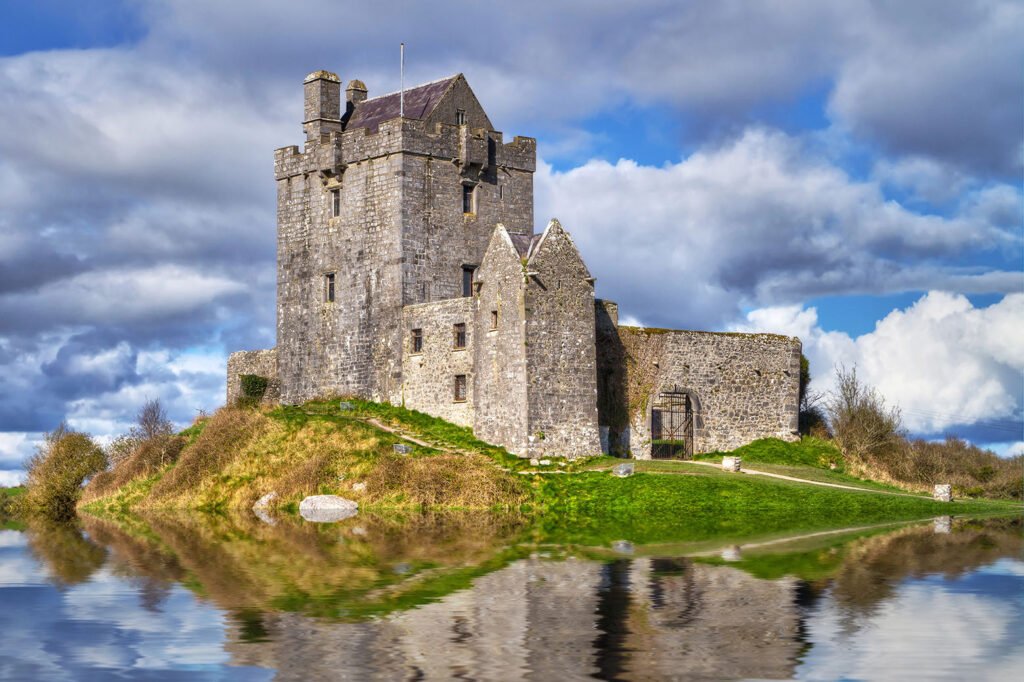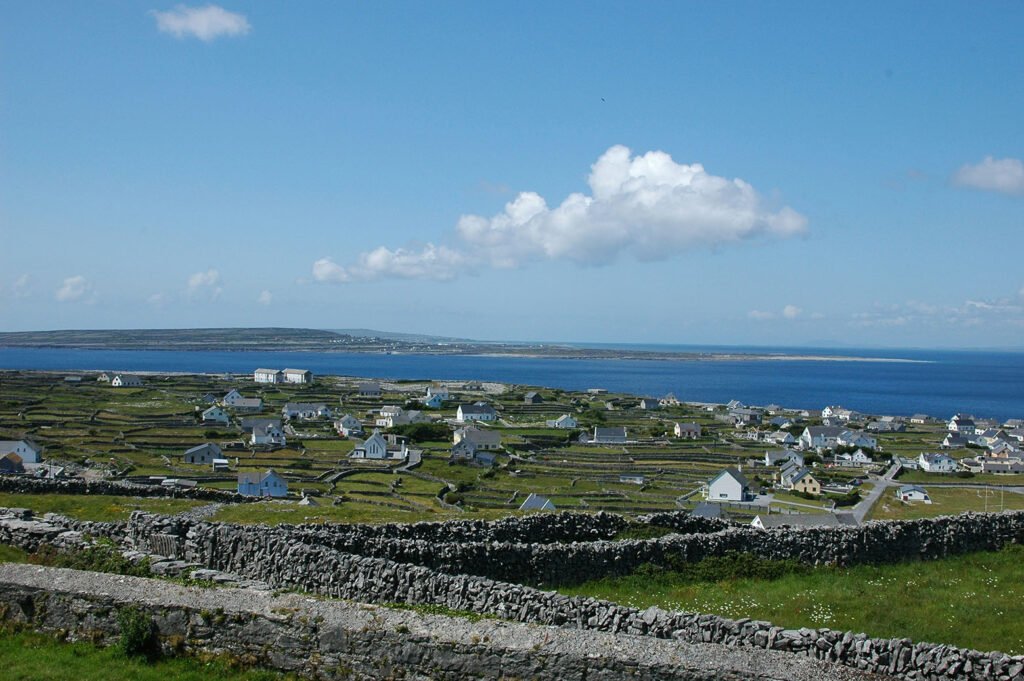
The Importance of Historical Sites
Historical sites play a crucial role in preserving and interpreting a region's heritage, providing invaluable insights into the cultural identity of communities. In Ireland, and specifically in County Galway, these sites serve as tangible links to the past, enabling individuals to explore the rich narrative of their ancestors. The significance of historical sites extends beyond mere attraction; they are integral to understanding the complexities of national and regional identities. They foster a sense of place and belonging, allowing visitors and locals alike to connect with their roots.
Tourism is another key aspect that underscores the importance of historical sites. County Galway, renowned for its diverse array of historical landmarks—from ancient castles to prehistoric burial mounds—draws countless visitors each year. This influx not only benefits the local economy but also elevates the appreciation of Irish heritage on an international scale. Tourists seeking to immerse themselves in the authentic Irish experience find these destinations particularly appealing. By understanding the history embedded in the landscape, they gain a deeper appreciation for the cultural tapestry that characterizes Ireland.
Furthermore, historical sites serve as vital educational resources. They offer unique opportunities for learning outside the traditional classroom environment, fostering engagement with history, archaeology, and architecture. Guided tours and educational programs at various historical locations in County Galway enhance public knowledge and stimulate interest in the preservation of history. As such, these sites perform an essential function in raising awareness about the importance of cultural heritage and the need to safeguard it for future generations.
Galway city, the capital of the county, is often considered the cultural heart of Ireland. The city is known for its lively festivals, artistic communities, and traditional Irish music, all of which contribute to its eclectic vibe. As a vital hub, Galway serves as a gateway to the breathtaking landscapes of Connemara, the majestic Cliffs of Moher, and the idyllic Aran Islands. Each of these locations offers unique opportunities for exploration and connection with Ireland's natural beauty.

County Galway Historical Sites
The Claddagh and its Legacy
The Claddagh is a historically significant fishing village located on the outskirts of Galway, Ireland. Its name is derived from the Gaelic term "An Cladach," meaning "the pebble shore." The village is famously associated with the Claddagh ring, a traditional piece of jewelry that symbolizes love, loyalty, and friendship. The origins of this iconic ring trace back to the 17th century, embodying the values cherished by the local community.
The Claddagh ring features two hands representing friendship, a heart signifying love, and a crown symbolizing loyalty. This unique design has garnered international acclaim, making the Claddagh ring a popular emblem of devotion and companionship worldwide. Historically, this symbol was used by fishermen to convey their commitment to loved ones while they were away at sea, further intertwining the ring’s meaning with the identity of the Claddagh community.
The Abbey of Clonfert: A Historical Overview
The Abbey of Clonfert, located in County Galway, Ireland, is a significant monastic site founded by St. Brendan the Navigator in the 6th century. This distinguished abbey served not only as a religious center but also as an academic hub during a period marked by the spread of Christianity throughout Ireland. St. Brendan's influence established Clonfert as a prominent site of pilgrimage, attracting devotees from far and wide, seeking spiritual enrichment and learning in juxtaposition to the challenges of the time.
Architecturally, the Abbey of Clonfert displays characteristics typical of early medieval Irish ecclesiastical buildings. The remains of the original church, constructed in the 12th century, are notable for their intricate stonework and impressive round tower. These features reflect the skill of the craftsmen of the era, as well as the artistic and cultural aspirations of the monastic community. The church's layout is aligned with the traditional layout of an Irish church, showcasing a nave with side aisles and an impressive stone altar, often adorned with ornate carvings and icons that contributed to the site's spiritual ambiance.
During the medieval period, the influence of religion was paramount, and the Abbey of Clonfert played a critical role in shaping the religious landscape of the region. The abbey became a sanctuary for scholars and monks, fostering education, theology, and manuscript production. Here, numerous illuminated manuscripts were created, which have since been recognized as invaluable cultural artifacts. The abbey also served as a beacon of faith, where many pilgrims would journey to seek guidance and solace, further enhancing its reputation as both a religious and cultural institution in County Galway. This legacy continues to inspire those who visit, drawn by the historical significance and serene beauty of the site.
The Enigma of Athenry Castle
Athenry Castle, an exemplary medieval fortress located in County Galway, stands as a testament to the region's rich historical narrative. Constructed in the late 12th century, this remarkable structure epitomizes the characteristics of Norman military architecture. The castle's imposing stone walls and robust defensive features reveal significant insights into the societal values and architectural techniques of its time. The castle's design includes imposing towers, drawbridges, and arrow slits, each serving practical purposes during the turbulent periods of Norman conquest and local conflicts.
The strategic importance of Athenry Castle cannot be overstated. It served as a stronghold for the Anglo-Norman settlers who arrived in Ireland, providing a critical military base from which they could secure their control over the surrounding territory. The castle's location along the River Clare made it an ideal site for surveillance and defense. Furthermore, it played a pivotal role during conflicts, particularly during the wars between the native Irish clans and the Anglo-Normans. These historical events have contributed to the castle's enigma, as tales of bravery, betrayal, and siege continue to intrigue historians and visitors alike.
In addition to its architectural significance and military history, Athenry Castle is steeped in local folklore. Legends surrounding the castle depict ghostly apparitions and storied battles, enriching the castle's charm and allure for visitors. This melding of history and mythology captivates tourists who explore the site, allowing them to engage with a vibrant tapestry of stories from centuries past. The castle not only serves as an educational resource regarding medieval history but also forms an essential part of the cultural heritage of County Galway today.
Exploring the Wild Atlantic Way: Loughrea and its Ancient Sites
Loughrea, a picturesque town situated along the breathtaking Wild Atlantic Way in County Galway, offers a rich tapestry of history etched into its landscape. This area, renowned for its stunning coastal scenery, is equally significant for its historical contributions, notably the ancient sites that highlight its importance in trade and settlement throughout the centuries.
A prominent feature of Loughrea is Loughrea Castle, which dates back to the 13th century. This castle, though now in ruins, served as a critical fortified stronghold during times of conflict, reflecting the town's strategic importance. The remnants of the structure provide intriguing insights into medieval architecture and feudal life, captivating the imagination of historians and visitors alike. The castle's surroundings, enriched with folklore, narrate stories of power struggles and local legends that shaped the area's cultural identity.
In addition to Loughrea Castle, the region is dotted with the ruins of medieval churches, such as St. Brendan's Church. These ecclesiastical sites speak volumes about the spiritual and social dynamics of the time. The remains not only exhibit the craftsmanship of early builders but also serve as a testament to the spread of Christianity in Ireland. Each stone tells a story of the individuals who passed through these sacred spaces, marking Loughrea as a vital center of religious congregations.
The historical significance of Loughrea is interwoven with the broader narrative of the Wild Atlantic Way, which facilitated trade and interaction among communities. As boats and goods traveled along this stunning route, Loughrea became a stopping point for travelers, fostering exchange and cultural blending. Its ancient sites are more than just remnants of the past; they symbolize the town’s enduring legacy as a vibrant hub of history in County Galway, encouraging modern visitors to reflect on the narratives that have shaped this captivating region.
Galway City: A Confluence of Cultures
Galway City, often referred to as the cultural heart of Ireland, is a remarkable testament to the rich historical tapestry woven from various epochs. The city’s evolution began as a small fishing village, but it swiftly grew into a significant trade port during the Middle Ages. This transformation can be attributed to its strategic location along the western coast, which facilitated trade and interaction with various cultures, including the Spanish, Anglo-Norman, and the native Gaelic peoples. Notable landmarks such as the Spanish Arch are emblematic of this historical significance.
The Spanish Arch, a striking structure that dates back to the 16th century, was originally constructed to serve as a protective gateway for the merchants of Galway. It reflects the city’s early connections with continental Europe, particularly Spain, and stands as a reminder of Galway's role in international trade during a time of burgeoning global commerce. Alongside the Spanish Arch, the remains of the Medieval walls surround the city, further illustrating its historical prominence. These walls, built in the late 12th century, were crucial in fortifying Galway against invasions and have since become a symbol of the city's enduring legacy.
The blending of architectural styles and cultural influences is evident throughout Galway City, showcasing its historical diversity. As one strolls through the city’s bustling streets, the vibrant atmosphere is enhanced by the presence of numerous festivals, music events, and art exhibitions, all of which contribute to its reputation as a hub of creativity. Each of these cultural elements, from traditional Irish music to contemporary art, reflects the city's historical evolution and underscores its significance as a melting pot of different cultures, making Galway City a fascinating destination for history enthusiasts and cultural explorers alike.
The Significance of Ceannt Station
Ceannt Station, located in the heart of Galway city, stands as a testament to the profound impact of the railway on the region's development and connectivity. Opened in 1891, the station was named after Éamonn Ceannt, a prominent figure in the Easter Rising of 1916. Its historical importance is multifaceted; it not only served as a crucial link to other parts of Ireland but also played a vital role in the socio-economic tapestry of Galway. The advent of railway transport revolutionized movement and trade, allowing for the rapid exchange of goods and people, significantly contributing to the growth of the city.
The architectural features of Ceannt Station reflect both functionality and aesthetic appeal, showcasing the Victorian architectural style prominent during that era. Originally designed by the renowned engineer William Francis McGowan, the station is characterized by its red brick facade, intricate detailing, and spacious interiors. The grand entrance hall, adorned with high ceilings and large windows, provides a welcoming atmosphere for travelers. Over the years, the station has undergone several renovations, yet it has retained much of its original charm, making it a focal point of interest for visitors exploring historical sites in County Galway.
Throughout the 19th and 20th centuries, rail travel facilitated enhanced connectivity for Galway, linking it to Dublin, Limerick, and beyond. This not only encouraged tourism but also propelled local industries, such as agriculture and fishing, enabling them to thrive through easier access to markets. By providing a reliable mode of transportation, Ceannt Station has played a pivotal role in shaping the region’s economic landscape. Its enduring legacy continues to influence modern-day travel in the area, ensuring that Ceannt Station remains a significant landmark in Galway's rich history.
